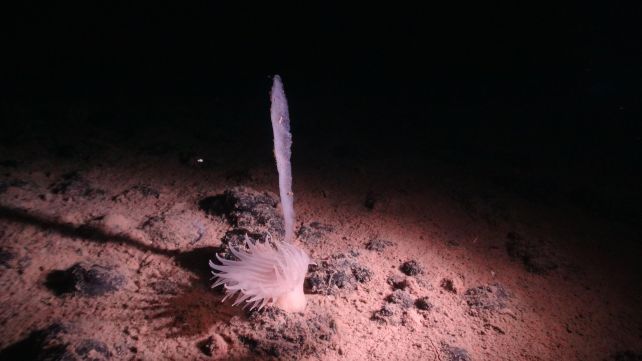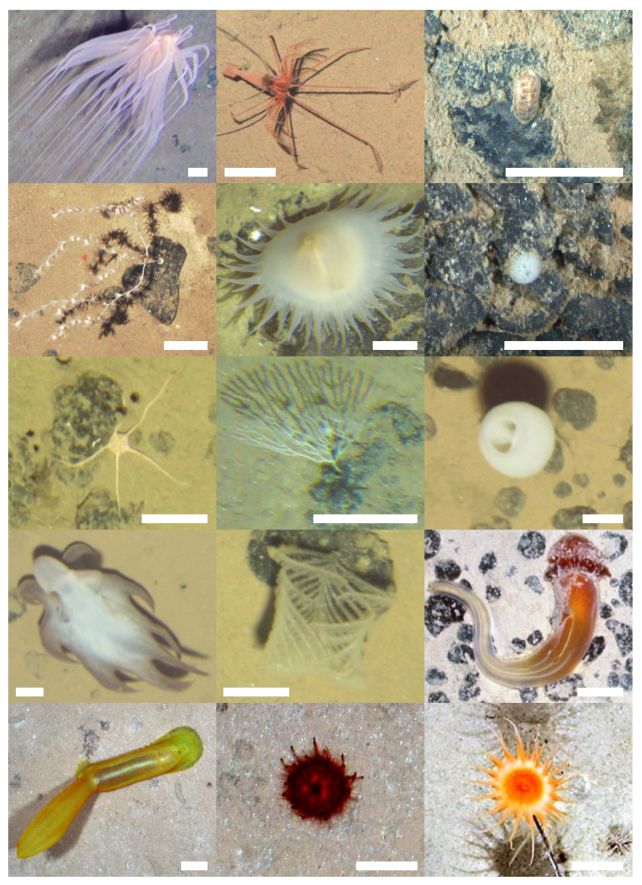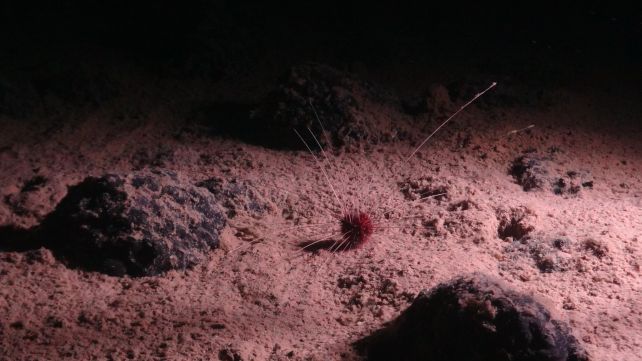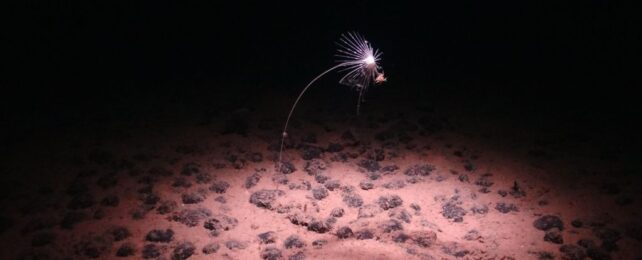Deep under the ocean, not all ecosystems are built alike.
And, as an international team of scientists has now found, the very deepest depths are dominated by a particular kind of organism. Below a depth of around 4,400 meters (14,436 feet), most of the creatures lurking in the darkness have soft, squishy bodies. It's only above that line that hard-shelled mollusks are generally found.
The reason, scientists believe, has to do with the availability of the minerals from which shells are formed. This knowledge could help us protect biodiversity against human activity in these cold, dark, and eldritch environments.
"Muddy abyssal seafloors were initially considered to be almost 'marine deserts' when first explored many decades ago, given the extreme conditions for life there – with a lack of food, high pressure, and extremely low temperature," says deep-sea ecologist Erik Simon-Lledó of the National Oceanography Center in the UK.
"But as deep exploration and technology progressed, these ecosystems keep unveiling a large biodiversity, comparable to that in shallow water ecosystems, only found on a much wider spatial spread."

The abyssal ocean covers more than 60 percent of Earth's surface, but so little is known about the life that dwells therein. It's an environment anathema to humans: crushing pressures, freezing temperatures, and perpetual darkness, far from the light of the Sun.
However, technology has improved to the point that we can remotely explore these darkest of depths, revealing the world's weird pale and soft underbelly.
Using deep-sea robots, Simon-Lledó and his team collected a large database of images from an abyssal plain known as the Clarion-Clipperton Zone, extending 5,000 kilometers (3,107 miles) at the bottom of the Pacific Ocean between Mexico and Kiribati at depths between 3,500 and 6,000 meters.
They painstakingly cataloged all the animals they could find larger than 10 millimeters in size from these images. They indexed more than 50,000 abyssal creatures – and they noticed a marked difference in the types of animals found in shallower depths compared to those at the very deepest parts of the zone.

"We were surprised to find a deep province so clearly dominated by soft anemones and sea cucumbers and a shallow-abyssal where suddenly soft corals and brittle stars were everywhere," Simon-Lledó says.
Nor did mollusks, with their hard shells, appear below 4,400 meters, although all kinds of abyssal life populated a transition zone between the two regions. That certain depth, the researchers found, is probably related to the carbonate compensation depth.
Hard shells are formed from calcium carbonate, which diffuses through the ocean from the surface. Below a certain depth, however, insufficient calcium carbonate remains, leading to a lack of it on the seafloor, to be taken up by hard-shelled fauna.

This suggests a delicate balance at play in the biodiversity of the deep ocean, one that could easily be disrupted by ocean acidification, climate change, and deep sea mining, for which the Clarion-Clipperton Zone is currently under consideration.
"Overall, this reflects a much higher ecological heterogeneity, at multiple scales, than was previously expected for benthic assemblages across the northeast Pacific abyssal seabed," the researchers write in their paper.
"This overlooked heterogeneity, stemming from geochemical and climatic forcing, has crucial implications for future ecological and macroecological research in abyssal communities and for the success of regional-scale conservation strategies implemented to protect biodiversity in the Clarion-Clipperton Zone and probably in other abyssal areas targeted by deep-sea mining worldwide."
The research has been published in Nature Ecology & Evolution.
